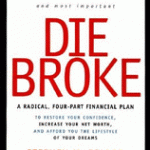Thanks to a link provided by schoolteacher who has been using material from 2young2retire.com in her charter school classroom, we decided to update our page for entrepreneurs. Here it is:
You may always have dreamed of being your own boss, or you may find yourself driven by an economic climate that opens new doors even while it closes others. Whatever the motivation, welcome to the club. You are in excellent company. While young entrepreneurs tend to be the darlings of the media, the 55 and older cohort of entrepreneurs is growing faster and doing better. Why? Could be life/work experience, some cash from a downsizing, mortgage paid off, kids launched, and an idea that has been incubating for a while. Too Young to Retire: 101 Ways to Start the Rest of Your Life (Plume 2004) is packed with business ideas, from antique restorer to wedding planner. If your big idea isn’t listed here, feel free to drop me a line and tell me about it: marika@2young2retire.com.
Obviously launching a business at any age is a huge undertaking and we can only scratch the surface of the subject here. The good news is, there is plenty of information available to anyone with access to a computer and Internet connection. Beside some fire in the belly and cash, what we all need as entrepreneurs is help from experienced business people who can mentor us through the startup process and direct us to the people and resources that help us grow.
Small Business Resources
As of this writing, Service Corps of Retired Executives (SCORE) is about to launch a newly designed website that will make it even easier to connect with experienced mentors — 13,00 of them — on line and in a new series of workshops on starting, managing and growing your business. A click will take you to an archive of business columnists SCORE has been around since 1964 offering free and confidential business advice that has helped millions of aspiring entrepreneurs.
Wall Street Journal Small Business is another excellent source of ideas and expert opinion. The Small Business Guide covers everything from starting a business to selling it.
Another source of good general information for free is the Small Business Administration. See also the Virtual Business Plan from Bizplanit.
Business Insurance is a handy guide to some basics including legal, marketing and personnel resources with live links to speed you there.
The independent entrepreneurs check out Working Solo (www.workingsolo.com), the terrific site started by Terri Lonier (lone-yay) on the joys of being “boss-free.” Ilise Benun’s Marketing Mentor is also dedicated to the soloist or small partnership. Get a free consultation, daily newsletter and preview of her books.
You can find lots of help by seeking out trade associations connected with the business you’re considering. Trade associations can fast-track you right into the action, helping you connect with the people in the know, and perhaps even some financing sources. When Paul and Sands Belizzi wanted to ranch alpacas in Northern California, they got started in just this way: Alpaca Owners and Breeders Association (U.S.), 800-213-9522.
As the name suggests, the National Business Incubation Association “provides entrepreneurs with the expertise, networks and tools they need to make their ventures successful.”
The U.K. has a model for what is possible when you have a champion. In this case, the champion is Charles, Prince of Wales, and his organization is Prime-Cymru (Welsh for Wales), www.prime-cymru.co.uk, dedicated to help would-be entrepreneurs 50 and older get a start. Of the 600 start-ups Prime-Cymru has helped launch, only 6 have failed.
Inn Keeping
Thinking about owning/operating a B&B (who hasn’t)? You might want to contact theProfessional Association of Innkeepers International for some on the ground information. Try out innkeeping for a season or a year. Or check out house sitting via THE CARETAKER GAZETTE, (715-426-5500) published by Gary and Thea Dunn.
Owning/Operating A Family Business
If you do go into business for yourself, chances are you’ll find yourself (at least in early stages) working with your spouse or another family member. A caveat: these partnerships are easier to get into than to get out of, so make sure you know how to end gracefully (and save the relationship itself).
The Center for Family Business has courses and more information on this topic. 203-932-7421. Another resource: The Family Firm Institute, Inc.
And, don’t overlook your local Chamber of Commerce. Knowing who’s who in business in your community can be a great way to test the waters.
Books/Magazines
There are literally hundreds of books on becoming a successful entrepreneur. One of our favorites remains Paul Hawken’s Growing a Business (Fireside, 1998). The co-founder of Smith and Hawken, he now leads The Natural Step, an organization committed to sustainable business practices.
Inc. Magazine remains a reliable source of information for the entrepreneur, whether you are just starting out or growing your business. We loved the recent coverage on balancing business with life featuring Pete and Laura Wakeman of Great Harvest Bakery. Search the Inc. site for this.
Also useful is Entrepreneur magazine, which also features a wealth of small business how to’s.
Jeff Berner’s The Joy of Working From Home: Making a Life While Making a Living (Berrett- Koehler Publishers, Inc. 1994) is a classic of its kind, packed with great ideas for you entrepreneurs and independent contractors.

